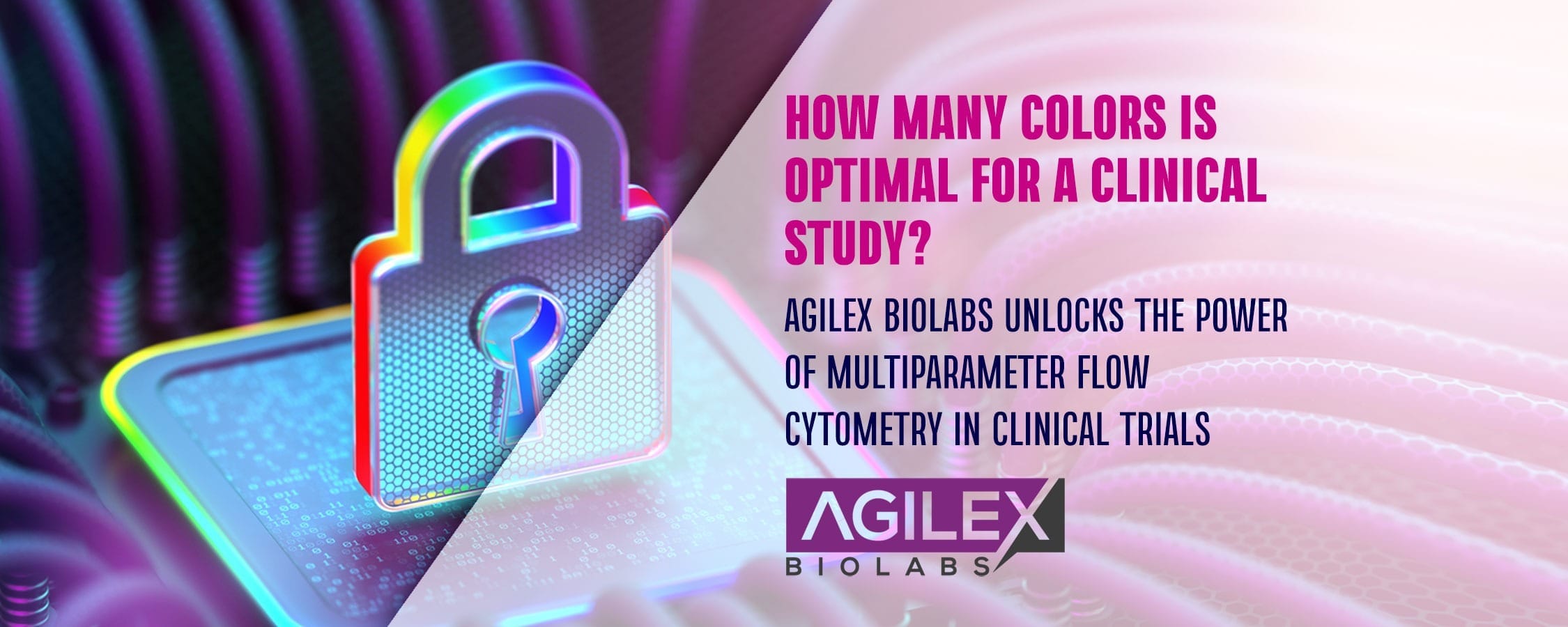Flow cytometry has become a powerful tool in the bioanalytical arsenal.
In an era where pharmaceuticals are becoming more targeted and complex, so have modern flow cytometers. With capabilities of analyzing greater than 40 parameters per tube simultaneously, modern flow cytometry has reshaped the discovery phase of many drug development and research programs by providing more data per tube, thereby speeding up the process of refining the key proteins associated with the drug’s function. Whilst this increase in capability has been welcomed by the Bioanalytical community, with many laboratories investing in new hardware, the increased complexity also presents several challenges around panel design, data analysis and interpretation, begging the question – how many colors is optimal for a clinical study?
The power of flow cytometry hinges not only on its ability to measure global changes in cellular populations with high definition, but also in changes in cell surface and intracellular proteins in single cells. Simplistically, flow cytometry utilizes fluidics, optics, and electronic components to interrogate single cells by lasers as they flow through the cytometer in a ‘single file’ liquid layer. In most applications, proteins of interest are labeled with fluorophores that emit light of a specific wavelength. Laser light is dispersed from the cells and the emissions from excited fluorophores are collected and directed toward photodetectors that isolate specific wavelengths and convert them to digitized signals in the form of numerical data. Thus, each fluorophore generates parameters and data which the researcher needs to analyze.
How Many Colors is Optimal for a Clinical Study?
Modern flow cytometers can now detect 40 parameters and beyond, making larger panels possible and generating more data related to discrimination of more markers across more cell types in a single sample. This demonstrates the power of high dimensional multiparameter flow cytometry, providing researchers within the exploratory early research and development drug discovery arena with a wealth of important data and near endless possibilities to refine how target proteins are interacting with cells or define which cell types and pathways are being modulated by the novel therapeutic.
In early drug discovery and the screening phase of lead compound identification, sample numbers are typically only small and where high throughput and fast turnaround of patient data is rarely a consideration, analyzing 40 parameters per tube is readily achievable. However, in a clinical trials situation, multiple patients are often co-dosed with several blood samples collected per patient per occasion and there is often the requirement for fast turn-around of data, particularly when the data is used to inform dose escalation or efficacy. In this scenario, analysis of 40 parameters or more per sample becomes a challenge.
Whilst there are software packages available to capture the data, within a GxP laboratory, each analytical run and the data associated with each marker needs to be independently reviewed, verified, accepted, QC checked and reported. Thus, making large multicolor panels longer to process. Since most service providers bill per batch, which usually has an hourly rate factored into it to cover the opportunity cost, larger more data intensive panels thus tend to be very expensive per batch. In addition, reagent costs for a 40 color panel add up when considering antibody costs, making pass through costs for the assay significant. In addition to time and cost, there is complexity associated with panel design of a 40 parameter assay – to avoid spectral overlap and interference and set the gating strategy for the assay. At Agilex Biolabs, custom flow cytometry panels are routinely established for clinical trials. With two custom built BD FACSymphony A3 20 color flow cytometers with 5 lasers, setup of custom immunophenotyping, cellular activation and proliferation or receptor occupancy assays are regular activities. In the realm of multicolor flow cytometry though, in clinical trials, we have observed that only rarely are greater than 15 parameter panels required. In fact, some assays including receptor occupancy and target engagement assays benefit from relatively small panels limited to less than 10 colors.
These assays typically require bespoke panels to analyze the most critical cells and proteins that the therapeutic is designed to target and modulate. Naturally, each project has its own unique requirements and some projects where sample volume is low would benefit from large multi-parameter panels to maximize the data output, however, keeping the panel simple has many advantages. Notably, the fluorophores can be spread out over 5 lasers to minimize any potential spectral overlap; the panel can be designed using the most optimal fluorophores for the markers of choice; and the gating strategy can be kept simple ensuring the data analysis time is kept short. Each of the above points enables fast turn-around of QC data, providing rapid decision-making in the clinic and facilitating dose escalation. Therefore, in the realm of flow cytometry bioanalysis to support Clinical trials, less is often more and whilst 40 parameters could be investigated, smaller focused panels do have considerable time and cost savings.
Engage with Agilex today
With decades’ experience across immunology, cell and molecular biology, Agilex’s cadre of seasoned peer-reviewed-published Scientists have been at the forefront of molecular medicine. What sets us apart, in addition to scientific excellence, is our collaborative way of working – an extension of the client’s laboratory of sorts – establishing custom assays and working together with the client to achieve success and hit those critical timelines to support the drug development process through the clinic.
For prospective clients embarking on flow cytometry studies to support their clinical trial, Agilex extends an invitation to engage in a collaborative dialogue. Schedule a teleconference with our team of scientists to delineate your unique requirements and chart a bespoke course of action tailored to your specific needs. Every drug candidate harbors distinct nuances, necessitating a tailored approach to unravel its pharmacological intricacies. Together, let’s embark on a journey of discovery, poised to unlock the full therapeutic potential of your therapeutic.
To learn more about conducting your drug development program in Australia or about Agilex Biolabs, contact our experts today.


